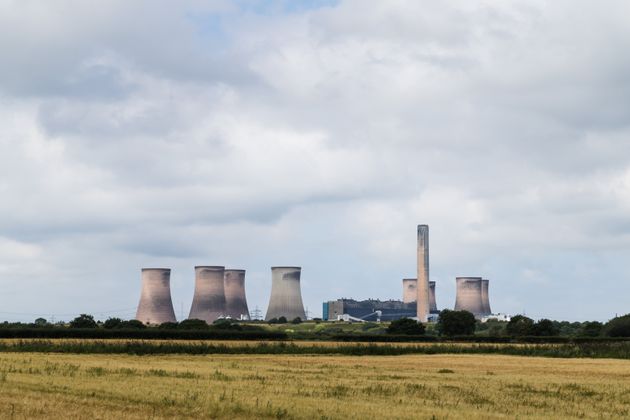Carbon emissions and footprints are frequently mentioned in conversations about living more sustainably but getting to the bottom of what they are – and finding out yours – can feel confusing.
Checking your carbon footprint is actually an easy way to assess the impact your actions are having on the planet and understanding it can help you make small changes which will have a positive effect on the world around us.
If you’ve no idea where to start, here’s everything you need to know.
Why are carbon emissions important?

Most of the carbon emissions we put out into the atmosphere come in the form of carbon dioxide, produced by the burning of fossil fuels. As these gases collect, they begin to heat up and cause global warming. Put simply, your carbon footprint is the total amount of emissions caused by your actions. This includes everything from the environmental impact of what you have for breakfast to your holiday plans.
As a global community, we need to work to reach net zero, which means reaching a balance between the emissions produced and those removed from the atmosphere. The UK government has set the aim of doing so by 2050, though numerous experts think we need to act quicker.
How do I check my carbon footprint?
There are many online calculators which can help you work out your carbon output. The World Wildlife Foundation has created a straightforward questionnaire, while Resurgence offers a more detailed take if you input information including your household’s energy usage. These will generate a rough estimation of your carbon footprint.
There are also apps including Giki Zero, which goes one step further and allows you to monitor your score and improve it by recording small changes in behaviour and habits. Its founder, Jo Hand, points out that doing this will also often have positive impacts on other areas of your life too.
“There’s often this feeling that if you’re going to live more sustainably, or be more eco-friendly, it has to cost more,” she says. “Actually, cutting your footprint can often help save money as well, and it can be better for your health and better for nature more generally.”
How to improve your carbon footprint…

Recent research from the Energy Saving Trust revealed 22% of our carbon emissions come from our homes, making it the perfect place to start making improvements. It advises starting with simple things like wrapping up warm while trying to feel cosy in the winter months, and keeping the curtains closed in the evenings to stop heat escaping through the windows.
The Big Energy Saving Winter campaign highlights that when you do need to pop the heating on, turning down the thermostat by just one degree can have a huge impact and if every household in the UK did so, we could save 3.5 million tonnes of CO2 per year – and your energy bill could go down by up to 10%.
Other changes you can make without even leaving the house are making sure your appliances aren’t on standby and avoiding having your laptop and phone on charge unnecessarily. Make sure lights are turned off when you’re not using them too, and to go one step further, replace your bulbs with energy-efficient LEDs. If everyone in Britain did the same, we’d cut up to 1.8 million tonnes of CO2 emissions per year and it could save you up to £40 a year on bills.
Striving to live in a planet-friendly abode could also result in another saving, with Green Mortgages on offer for UK residents buying homes with a high Energy Performance Certificate (EPC) rating.
By changing your shopping habits
“In the UK, we buy on average over 30 pieces of new clothing or shoes every year,” says Hand. “So that has a carbon footprint because of the carbon emitted in the production of the clothing. Each time we buy a new piece of clothing, it has that environmental impact.”
Buying fewer brand-new items will immediately lower your carbon footprint. “[We can] repurpose the clothes we have or swap them with a friend,” suggests Hand. “Buy second-hand, there’s Depop and loads of great vintage options which have grown quite significantly in the last 10 years.
“It’s just about reframing the way you think about things approaching it in a different way.”
Alter your food choices

A quarter of the world’s carbon emissions come from the food industry and of those, a whopping 58% come from the production of animal products. Sadly, there’s no avoiding the fact meat consumption is a huge contributor to our carbon footprint.
Going vegan isn’t for everyone though, admits Hand, and if you don’t fancy going fully plant-based, you can still make other changes. “Swap some red meat for putting more vegetables in or pulses,” she says. “Or make it a bit of a treat instead of having meat every day. That definitely helps save money too.”
Reducing food waste is another big factor. “The decomposition of the food also emits carbon so it’s a kind of double whammy there,” she says. “You’ve wasted the carbon to make the food and then you’ve created more carbon by having it decompose.
“When you unload your latest shop, check you aren’t hiding loads of stuff at the back of the fridge. It’s all about the planning. Not necessarily every meal, but have a rough idea of what’s going to last until when, so you don’t end up wasting your food and money.”
Travel
Finally, the way we travel, both daily and for holidays, is another area for improvement. When it comes to commuting, walking or cycling is best if possible, with public transport being the third most-planet friendly option.
The Energy Savings Trust suggests rethinking your journey to work and considering if you could combine walking or cycling to a station with a journey on a train or bus. If driving is the only option, consider reaching out to neighbours or colleagues to see if you could lift share.
When it comes to that all-important vacation time, flying is understandably the most carbon-intensive way to travel. “It’s just because planes are huge pieces of metal,” says Hand. “And they cover great distances that need a lot of fuel.”
One of the lessons we can take forward from 2020 though, is that the British staycation can be just as relaxing and rewarding as jetting off abroad. “Loads of people went away in the UK,” says Hand. “And although it was a different holiday, it was just as good. We live in a beautiful country that we live in that sometimes we don’t really spend much time exploring.”